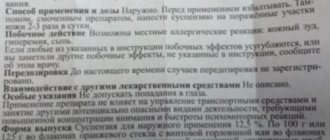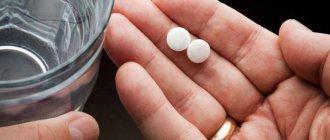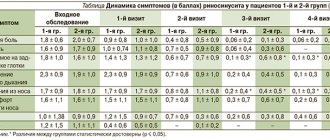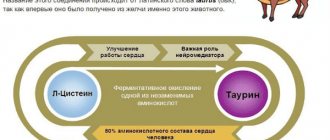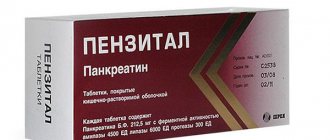Compound
Amitriptyline dragees and tablets contain 10 or 25 mg of the active substance in the form of amitriptyline hydrochloride.
Additional substances in the tablets are: microcrystalline cellulose, talc, lactose monohydrate, silicon dioxide, magnesium stearate, pregelatinized starch.
Additional substances in the dragees are: magnesium stearate, potato starch, talc, polyvinylpyrrolidone, lactose monohydrate.
1 ml of solution contains 10 mg of active substance. Additional substances are: hydrochloric acid (sodium hydroxide), dextrose monohydrate, water for infusion, sodium chloride, benzethonium chloride.
"Amitriptyline": main characteristics
The main component of the drug is the substance of the same name, amitriptyline (for better absorption, it is presented in the form of hydrochloride). Available in 3 forms:
- Tablets (each containing 10 mg or 25 mg of amitriptyline).
- Dragee (same dosage).
- Solution for injections (10 mg of amitriptyline per 1 ml volume).
According to its effects on the body, it is classified as a tricyclic antidepressant. Gives a sedative and thymoleptic effect, also acts as an analgesic (as an additional remedy).
Tablets, dragees and containers with solutions are dispensed only with a prescription. They are stored under normal room conditions (temperature no higher than 25 degrees, moderate humidity) within the general shelf life (3 years from the date of production).
Pharmacodynamics and pharmacokinetics
The drug reduces appetite, eliminates nighttime urinary incontinence, and has an antiserotonin effect. The drug has a strong central and peripheral anticholinergic effect.
The antidepressant effect is achieved by increasing the concentration of serotonin in the nervous system and norepinephrine in synapses. Long-term therapy leads to a decrease in the functional activity of serotonin and beta-adrenergic receptors in the brain. Amitriptyline reduces the severity of depressive symptoms, agitation, anxiety in anxiety-depressive conditions . By blocking H2-histamine receptors in the stomach wall (parietal cells), an antiulcer effect is provided. The medication is able to reduce body temperature and blood pressure during general anesthesia. The drug does not inhibit monoamine oxidases. The antidepressant effect appears after 3 weeks of therapy.
The maximum concentration of the substance in the blood occurs after a few hours, usually after 2-12. Excreted as metabolites in urine. Binds well to proteins.
Pharmacological properties of the drug Amitriptyline
Amitriptyline belongs to the group of tricyclic antidepressants. Inhibits the reverse neuronal uptake of catecholamines and serotonin, has a central anticholinergic and antihistamine effect. Not a MAO inhibitor. The thymoleptic effect of amitriptyline is combined with a sedative effect. They are used mainly for endogenous depression, including severe forms of the disease. Reduces feelings of anxiety and agitation. Effective in the treatment of nocturnal enuresis in children. After oral administration, it is well absorbed from the digestive tract. Bioavailability - about 50%. More than 90% of amitriptyline is bound to plasma proteins. Volume of distribution - 15 l/kg. The range of therapeutic plasma concentrations is 0.04–0.16 μg/ml. Metabolized in the liver to form pharmacologically active metabolites - nortriptyline and dinitrotriptyline. The half-life is about 24 hours. It is excreted mainly in the form of metabolites in the urine.
Indications for use of Amitriptyline
What are tablets and solution usually prescribed for?
The drug is indicated:
- for depression (agitation, anxiety, sleep disturbances, alcohol withdrawal, organic brain damage, neurotic withdrawal);
- for behavioral disorders, mixed emotional disorders, nocturnal enuresis , chronic pain syndrome (for cancer pathology, postherpetic neuralgia );
- for bulimia nervosa ;
- for migraine (for prevention);
- for ulcerative lesions of the digestive system .
Indications for the use of Amitriptyline in tablets and in other forms of release are the same.
Modern substitutes for Amitriptyline by action
On the pharmacological market there are analogs of Amitriptyline, which are produced based on the latest developments of pharmaceutical companies. Modern medications are gaining popularity in the treatment of psychoneurological pathologies due to their high efficiency and low toxicity.
Anafranil
Anafranil is an antidepressant that is available in tablets and parenteral solution. The active ingredient in the drug is clomipramine.
The drug is prescribed for:
- various etiologies of depressive states;
- depression in patients with schizophrenia;
- psychopathy;
- depression in elderly patients caused by somatic pathologies;
- obsessive-compulsive syndromes (OCS);
- catalepsy;
- phobias and paranoia;
- severe pain.
Medicine is not prescribed for:
- sensitivity to the drug composition;
- therapy with MAO inhibitors and MAO-A;
- arrhythmias.
Anafranil is also not used during pregnancy, in the treatment of children, or during lactation. Prescribed with restrictions for:
- epileptic and convulsive seizures;
- atrioventricular block;
- cardiac arrhythmia and myocardial failure;
- high intraocular pressure and glaucoma;
- malignant neoplasms in the adrenal glands;
- severe liver pathologies;
- hyperthyroidism.
The doctor prescribes the dosage regimen individually. 1-2 ampoules are prescribed intramuscularly per day, with a daily increase of 1 ampoule to a therapeutic dose of 4-6 ampoules per day. After the severe symptoms of the disease are relieved, the patient is transferred to oral forms of therapy.
The medication is administered into a vein using a dropper once a day (2-3 ampoules). The maximum dosage per day for different dosage forms of the drug should not be higher than 150 mg.
Negative symptoms:
- dizziness and unsteadiness of gait;
- lethargy and pain in the head;
- dyspepsia and loss of appetite;
- increased sexual activity;
- skin rashes and itching.
Doxepin
Doxepin belongs to the pharmacological group of antidepressants with anxiolytic, antipruritic, and analgesic effects. The main component in the drug is doxepin hydrochloride. Doxepin is produced in tablets and is used for:
- manic-depressive state;
- cognitive impairment;
- depression;
- panic and anxiety syndrome;
- neurotic pathologies;
- PMS in women.
Doxepin is not used in therapy for:
- hypersensitivity to the drug composition;
- treatment with MAO inhibitors;
- cardiac conduction disturbances;
- cytopenia and glaucoma.
Also not used in pediatrics under 12 years of age, in the 1st trimester of pregnancy and during lactation. Prescription is limited when:
- cardiac pathologies with heart rhythm disturbances;
- convulsive and epileptic seizures;
- renal and hepatic dysfunction;
- impaired microcirculation in the brain;
- prostatitis;
- disorders in the functioning of the gastrointestinal tract.
The tablets should be taken twice a day, immediately after meals. The initial dosage per day is 75 mg with an increase in dosage to 150-300 mg. The duration of the therapeutic course is determined by the doctor, but the average course lasts 15-21 days.
Side effects:
- decreased vision;
- stomatitis, dyspepsia and loss of appetite;
- intestinal obstruction;
- skin allergies;
- hemorrhages and vasculitis;
- testicular swelling and impotence.
See also:
TOP 8 Rexetine analogues - substitutes for therapeutic effect
Contraindications
According to the annotation, the medicine is not used:
- for myocardial infarction ;
- intolerance to the main component;
- for angle-closure glaucoma ;
- acute intoxication with psychoactive, analgesic, hypnotics;
- for acute alcohol intoxication;
- during breastfeeding;
- severe disturbances of intraventricular conduction and antioventricular conduction;
- with pathology of the cardiovascular system;
- with suppression of bone marrow hematopoiesis;
- manic-depressive psychoses;
- bronchial asthma;
- chronic alcoholism;
- decreased motor function of the digestive system;
- stroke;
- liver and kidney pathologies;
- intraocular hypertension;
- urinary retention;
- prostatic hyperplasia;
- with hypotension of the bladder;
- thyrotoxicosis;
- pregnancy.
For epilepsy , Amitriptyline is prescribed with caution.
Analogues in other forms
There are analogues of Amitriptyline, which manufacturers produce in different dosage forms. The effectiveness of these medications is no lower than that of Amitriptyline.
Ludiomil
Ludiomil is an antidepressant drug based on the active ingredient - maprotiline hydrochloride. The medicine is manufactured in coated tablets.
Prescribe medication for:
- depression of endogenous and involutional etiology;
- neurological depression;
- depressions of masked and somatogenic origin;
- reactive and menopausal depression;
- psychosomatic disorders;
- apathy and anxiety syndrome;
- neurological dystrophy.
The drug is not prescribed for:
- convulsive and epileptic syndrome;
- acute phase of a heart attack;
- impaired cardiac conduction;
- liver dysfunction;
- kidney failure;
- glaucoma;
- urine retention in the body;
- intoxication with alcohol, psychotropic and sleeping pills;
- allergies to ingredients in the composition.
During pregnancy, pediatrics and lactation, Ludiomil is prescribed with caution.
The doctor prescribes the dosage of the drug individually. Do not exceed the daily dose of 150 mg. Treatment of depression - 75 mg per day, for children a dosage of 10 mg 3 times a day or 25 mg once a day is prescribed. Elderly patients are prescribed the same dosages as children.
Negative actions:
- arrhythmia and blood pressure fluctuations;
- mydriasis and dizziness;
- blurred vision and increased blood pressure inside the eye;
- hallucinations and lethargy;
- dyspepsia, dry mouth and constipation;
- depression, insomnia, apathetic mood;
- inhibition of hemostasis;
- skin reactions - rashes, itching, hyperemia, hemorrhages and urticaria.
Melipramine
Melipramine is a tricyclic antidepressant that contains the active ingredient imipramine hydrochloride. The medicine is produced in solution for injections and in tablets. The drug has less sedative effect than Amitriptyline. Melipramine is prescribed for:
- depression and depressive states of various origins;
- astheno-depressive syndrome;
- neuropathy of diabetic and systemic etiology;
- psychopathy, neuropathy and psychosis;
- neuroses and behavioral disorders;
- childhood enuresis;
- severe pain syndrome due to oncology;
- state of panic;
- neuralgia, catalepsy and bulimia;
- migraine pain.
Medicine is not prescribed for:
- hypersensitivity to components;
- intoxication with medications and ethanol;
- impaired conduction of impulses in the myocardium.
Not used in pediatric practice under 6 years of age, as well as in the treatment of women during pregnancy and pregnancy.
The tablets should be taken immediately after eating. The average starting dose is 25-50 mg, increasing to 200-250 mg. The mild stage of depression is treated for 4-6 weeks. The medicine must be discontinued gradually so as not to provoke negative symptoms. For children and elderly patients, the starting dose should not exceed 10 mg with an increase to 20-50 mg.
Side symptoms:
- arrhythmia, pressure fluctuations and dizziness;
- mydriasis;
- decreased vision;
- depression, confusion and hallucinations;
- dyspepsia, nausea, anorexia and constipation;
- insomnia or drowsiness;
- anemia, leukopenia;
- bronchospasms, laryngeal edema and urticaria.
See also:
TOP 12 cheap analogues of Spazmalgon - drug substitutes for the active substance
Side effects of Amitriptyline
Nervous system: agitation, hallucinations, disorientation , fainting, asthenia, drowsiness, anxiety, hypomanic state, increased depression, depersonalization , motor restlessness, increased epileptic seizures, extrapyramidal syndrome , ataxia, myoclonus, paresthesia in the form of peripheral neuropathy, tremor of small muscles, headache.
Anticholinergic effects: increased intraocular pressure, blurred vision, mydriasis, dry mouth, tachycardia , difficulty urinating, paralytic ileus, delirium, confusion, decreased sweating.
Cardiovascular system: instability of blood pressure, intraventricular conduction disorders , arrhythmia, orthostatic hypotension , dizziness, palpitations, tachycardia.
Digestive tract: darkening of the tongue, diarrhea, changes in taste perception, vomiting, heartburn , gastralgia, hepatitis, cholestatic jaundice.
Endocrine system: galactorrhea, hyperglycemia , decreased potency or increased libido, increased size of the mammary glands, gynecomastia , testicular swelling, syndrome of inappropriate ADH secretion, hyponatremia. Hypoproteinemia , pollakiuria, urinary retention, enlarged lymph nodes, hyperpyrexia, swelling, tinnitus, and hair loss are also noted
When discontinuing the drug, unusual agitation, sleep disturbances, malaise, headache, diarrhea, nausea, unusual dreams, restlessness, and irritability are noted. When administered intravenously, a burning sensation, lymphangitis , thrombophlebitis , and an allergic response .
Reviews of the side effects of Amitriptyline are quite frequent. When using the drug, addiction may also occur.
Amitriptyline overdose, symptoms and treatment
It manifests itself as extrapyramidal syndrome, drowsiness, delirium, severe dry mouth, and tachycardia. In more severe cases, respiratory depression, convulsions, coma, impaired myocardial function, acidosis, and hypothermia occur. Treatment: gastric lavage and use of activated carbon. In case of cardiac dysfunction, ECG monitoring is performed. If necessary, carry out symptomatic therapy; Digoxin or β-adrenergic blockers should not be used. If convulsions occur, diazepam is prescribed intravenously; in more severe cases, general anesthesia is prescribed. In the presence of severe anticholinergic symptoms, physostigmine is used.
List of pharmacies where you can buy Amitriptyline:
- Moscow
- Saint Petersburg
Amitriptyline, instructions for use (Method and dosage)
The medicine is taken orally immediately after eating, without chewing, which ensures the least irritation of the stomach walls. The initial dosage is 25-50 mg at night for adults. Within 5 days, the amount of the drug is increased to 200 mg per day in 3 doses. If there is no effect within 2 weeks, the dose is increased to 300 mg.
Solutions are administered slowly intravenously and intramuscularly, 20-40 mg 4 times a day with a gradual transition to oral administration. The course of therapy is no more than 8 months. For prolonged headaches, for migraines, chronic pain syndrome of neurogenic origin, for migraines, 12.5-100 mg per day is prescribed.
Instructions for use of Amitriptyline Nycomed are similar. Before use, be sure to familiarize yourself with the contraindications for the drug.
Cost of Amitriptyline and its analogues
The drug is in the low price segment. Also, its domestically produced analogues have a budget price. Foreign generics of Amitriptyline and its therapeutic substitutes are several times more expensive than Russian medicines.
| Name of medicine | Dosage of the main component in mg | Number of units per package | average cost |
| Amitriptyline | 25 10 | 50 2 ml/10 | 31-79 54-93 |
| Saroten | 25 | 100 | 512-524 |
| Anafranil | 25 | 30 | 314-328 |
| Doxepin | 50 | 30 | 500-515 |
| Amizol | 25 | 30 | 115-156 |
| Amirol | 10 | 50 | 170-197 |
| Tryptisol | 25 | 20 | 56-65 |
| Elivel | 10 | 100 | 268-287 |
| Ludiomil | 10 25 | 50 30 | 650-664 769-780 |
| Melipramine | 25 | 50 | 350-365 |
| Clofranil | 25 | 50 | 226-273 |
| Fluoxetine | 20 | 20 | 132-148 |
| Paroxetine | 20 | 30 | 292-327 |
[compare name=`Anafranil|Doxepin|Saroten|Amizole|Amirol|Triptisol|Elivel|Lyudiomil|Melipramine|Clofranil|Fluoxetine|Paroxetine`]
See also:
TOP 9 analogues of Mirtazapine - substitutes from the group of antidepressants
Overdose
Manifestations from the nervous system: coma, stupor, increased drowsiness, anxiety, hallucinations, ataxia, epileptic syndrome, choreoathetosis, hyperreflexia, dysarthria, muscle tissue rigidity, confusion, disorientation, impaired concentration, psychomotor agitation.
Manifestations of an overdose of Amitriptyline from the cardiovascular system: disturbance of intracardiac conduction, arrhythmia, tachycardia, drop in blood pressure, shock, heart failure, rarely - cardiac arrest.
Anuria , oliguria, increased sweating, hyperthermia , vomiting, shortness of breath, depression of the respiratory system, and cyanosis are also noted Possible drug poisoning.
To avoid the negative consequences of an overdose, emergency gastric lavage and administration of cholinesterase inhibitors are required in case of severe anticholinergic manifestations. It is also required to maintain water and electrolyte balance, blood pressure levels, control over the functioning of the cardiovascular system, and carry out resuscitation and anticonvulsant measures if necessary. Forced diuresis, as well as hemodialysis, have not proven effective in treating an overdose of Amitriptyline.
Amitriptyline substitutes with similar therapeutic effect
On the pharmacological market there are similar medications to Amitriptyline, which have a different structural composition, but the same therapeutic direction.
Clofranil
Clofranil is a tricyclic antidepressant drug containing clomipramine hydrochloride. The medicine is prepared in tablets and prescribed for:
- depression of various etiologies, which are accompanied by psychopathy and somatic pathologies;
- schizophrenia;
- obsessive-compulsive and pain syndrome;
- panic attacks, phobias and paranoia;
- cataplexy.
In childhood and adolescence it is prescribed for:
- OKS;
- enuresis in children after 5 years.
During pregnancy and lactation, it is prohibited to use Clofranil, and it is also prohibited to prescribe it for:
- sensitivity to ingredients;
- treatment with monoamine oxidase inhibitors;
- glaucoma;
- prostatitis.
Prescribed with restrictions for:
- brain pathologies;
- convulsions;
- insufficient conductivity within the myocardium;
- alcoholism;
- oncology in the adrenal glands;
- inhibition of bone marrow hematopoiesis.
Prescribe 1 tablet per day, followed by an increase to 4-6 tablets in 3 divided doses. After normalization of the condition, the dosage is reduced to 2-3 tablets as maintenance treatment.
Side effects:
- dyspepsia and stomatitis;
- loss of appetite and anorexia;
- arrhythmia, tachycardia and fluctuations in blood pressure index;
- mydriasis;
- blurred vision;
- paranoia, delusions, hallucinations;
- impotence;
- agranulocytosis;
- hyperemia, itchy skin and urticaria.
Fluoxetine
Fluoxetine is manufactured in gelatin capsules with the active ingredient - fluoxetine. Fluoxetine is an antidepressant from the serotonin uptake inhibitor group.
Medicine is prescribed for:
- depressions of different origins;
- OKS;
- bulimia and neuroses.
It is prohibited to use the medication when:
- allergies to ingredients in the composition;
- therapy with thioridazine and monoamine oxidase inhibitors;
- kidney/liver failure;
- lactose intolerance.
The drug is not used in pediatrics, pregnancy and breastfeeding.
Capsules must be taken orally. The initial dose is 20 mg once a day. If necessary, the doctor increases the dosage to 40-60 mg in 2-3 doses. The daily allowable intake of the drug is 80 mg.
Side symptoms:
- impotence and urine retention in the body;
- tachycardia, arrhythmia and hypertension;
- dyspepsia;
- hallucinations, delusions, phobias and confusion;
- dermatological rash and itching.
Paroxetine
Paroxetine is an antidepressant drug that is produced in tablets with the main component - paroxetine. It is used for:
- OKS;
- panic disorders;
- various etiologies of depressions;
- post-traumatic stress;
- phobias;
- feelings of anxiety.
The medication is not used in pediatrics and in case of allergies to the composition of the drug, as well as in therapy with monoamine oxidase inhibitors and in the treatment of pregnant and lactating women. The tablets are taken once a day. Dosages are selected and adjusted by the doctor based on pathologies. Standard doses according to disorders:
- depression – 20 mg, with a gradual increase to 50 mg;
- OKS – 20 mg with increasing dosage to 40-60 mg;
- panic attacks – 10 mg, increasing to 40-50 mg;
- anxiety syndrome – 20 mg.
Negative symptoms:
- increased irritability and nervousness;
- impotence;
- euphoria, hallucinations and delusions;
- arthralgia and muscle rigidity;
- dyspepsia and hepatitis;
- blood pressure fluctuations and arrhythmia;
- urticaria, itching and Quincke's edema.
See also:
TOP 12 cheap analogues of Theraflu - Russian substitutes for the drug in tablets and powder
Interaction
A hypotensive effect, respiratory depression , and a depressant effect on the nervous system are observed with the joint prescription of medications that depress the central nervous system: general anesthetics, benzodiazepines, barbiturates, antidepressants and others.
The drug enhances the severity of the anticholinergic effect when taking amantadine , antihistamines, biperiden , atropine , antiparkinsonian drugs, phenothiazine .
The drug enhances the anticoagulant activity of indadione , coumarin derivatives, and indirect anticoagulants. There is a decrease in the effectiveness of alpha-blockers and phenytoin .
Fluvoxamine , Fluoxetine increase the concentration of the drug in the blood. The risk of developing epileptic seizures increases, and the central anticholinergic and sedative effects also increase when combined with benzodiazepines, phenothiazines, and anticholinergics.
Simultaneous use of methyldopa , reserpine , betanidine , guanethidine , clonidine reduces the severity of their hypotensive effect.
Delirium develops when taking acetaldehydrogenase , Disulfiram . phenylephrine , norepinephrine , epinephrine , and isoprenaline on the cardiovascular system . The risk of hyperpyrexia increases when taking antipsychotics and m-anticholinergics.
Drug interactions Amitriptyline
When using amitriptyline in combination with other antidepressants, its dose is selected individually. The simultaneous administration of amitriptyline and MAO inhibitors can lead to hyperpyretic crisis, generalized convulsions and death. If it is necessary to replace amitriptyline with MAO inhibitors (or vice versa), the break in therapy should be at least 14 days. The combined use of tricyclic antidepressants and β-adrenergic receptor blockers leads to a decrease in the stimulating effect of antidepressants; phenamine enhances the antidepressant effect of amitriptyline. When taking tricyclic antidepressants and anticonvulsants simultaneously, the threshold for the occurrence of epileptic seizures is reduced. When combined with sympathomimetics, the risk of arrhythmias and hypertension (arterial hypertension) increases. Additional treatment with antiarrhythmic drugs also increases the risk of arrhythmias. Atropine enhances the anticholinergic effect of amitriptyline; with their combined use, the risk of developing intestinal obstruction is increased. Amitriptyline potentiates the effect of sedatives and hypnotics, as well as alcohol.
special instructions
Before carrying out therapy, monitoring blood pressure levels is mandatory.
Parenteral Amitriptyline is administered exclusively under the supervision of a physician in a hospital setting. In the first days of treatment it is necessary to observe bed rest. A complete abstinence from ethanol intake is required.
Abrupt refusal of therapy can cause withdrawal syndrome.
The drug at a dose of more than 150 mg per day leads to a decrease in the threshold of convulsive activity, which is important to consider in the development of epileptic seizures in patients with a predisposition.
It is possible to develop hypomanic or manic states in persons with cyclical, affective disorders during the depressive phase.
If necessary, treatment is resumed with small doses after relief of these conditions.
thyrotoxicosis when treating individuals taking thyroid hormone medications due to the possible risk of cardiotoxic effects.
The medication can provoke the development of paralytic intestinal obstruction in elderly people, as well as those prone to chronic constipation.
It is imperative to warn anesthesiologists about taking Amitriptyline before performing local or general anesthesia.
Long-term therapy provokes the development of caries .
riboflavin may increase .
Amitriptyline passes into breast milk and causes increased drowsiness in infants.
The medication affects driving.
Analogues in composition
Similar medications to Amitriptyline are medications that have an identical structural composition, but may differ in the dosage of amitriptyline in tablets or injection solutions.
Saroten
Sarotene is an antidepressant with the main component – amitriptyline hydrochloride. Saroten is produced in tablets and is prescribed for:
- severe phase of the development of depression with anxiety, overexcitation and sleep disturbances;
- depression in schizophrenia, with paranoid and suicidal thoughts;
- exacerbation of hallucinations and delusions;
- manic-depressive psychosis;
- pain syndrome of the chronic stage;
- enuresis of neurological origin.
The drug is not prescribed for:
- allergies to the medicinal composition;
- heart blockades and various types of arrhythmias;
- insufficiency of the coronary arteries;
- therapy with MAO inhibitors.
Also, the medicine is not prescribed in pediatrics to children under 7 years of age, during pregnancy and lactation.
The medication can be used only according to individual dosages established by the doctor. Doses are prescribed based on pathology:
- depression - 25 mg three times a day, followed by a gradual increase every 2 days to a dose of 150 mg per day (in a hospital setting, increase to 225-300 mg);
- therapy of childhood enuresis: 7-12 years – 25 mg, 12-18 mg – 50 mg. The tablets are taken half an hour before bedtime.
Patients with impaired functioning of the kidneys, liver and heart do not need dose adjustment.
Adverse reactions:
- dizziness and headache;
- tremors of the limbs and impaired coordination;
- dyspepsia with severe constipation;
- lethargy;
- symptoms of depression;
- skin allergies.
Amizol
Amizole is an antidepressant and antihistamine medication with sedative properties. The main component in the medicine is amitriptyline hydrochloride. The medicine is produced in tablets and solution for injections. Amizol is prescribed in the treatment of:
- depression;
- manic and depressive disorders;
- behavioral disorders;
- emotional overstrain;
- enuresis.
Do not prescribe tablets if you are sensitive to the ingredients, after a heart attack, in pediatrics, and during pregnancy and breastfeeding.
Prescribed parenterally (3 injections per day) - 75-100 mg. Therapy for childhood enuresis: 3-6 years old - 10 mg, 6-10 years old - 10-20 mg, 10-16 years old - 25-50 mg. The tablets are taken 60 minutes before bedtime.
Side effects:
- dizziness, weakness and insomnia;
- anorexia and dyspepsia;
- skin rashes and itching;
- disturbances in heart rhythm and decreased blood pressure;
- tremor and unsteadiness of gait.
Amirol
Amirol is an amitriptyline-based antidepressant. The drug has an anticonvulsant and antihistamine effect. Amirol is produced in tablets and is prescribed for:
- depression of endogenous origin;
- enuresis.
Amirol is not prescribed for:
- sensitivity to the drug composition;
- disturbances in myocardial rhythm;
- manias and phobias;
- liver dysfunction.
Not prescribed for children under 6 years of age, women during pregnancy and breastfeeding.
The medicine is prescribed once a day at a dose of 75 mg. If the pathology develops severely, you can take an additional dose in the evening. Dosages used in the hospital are 200-300 mg. The average therapeutic course lasts 3 months.
Negative actions:
- dyspepsia, dry mouth and anorexia;
- disturbances in urination and sexual function;
- decreased quality of vision;
- hypotension and arrhythmia;
- leukopenia;
- tremors of arms and legs, fainting;
- hepatitis;
- skin pathologies - hemorrhages, purpura, urticaria.
Tryptisol
Tryptisol is an antidepressant drug with antihistamine and sedative properties with the main ingredient amitriptyline. The drug is manufactured in tablet and parenteral forms and is used for:
- depressive syndrome;
- endogenous depression;
- psychosis;
- schizophrenia;
- anxiety-depressive syndrome;
- behavioral disorders in adolescence and old age;
- anorexia of psychogenic origin;
- neurogenic etiology of pain;
- childhood enuresis.
Tryptisol is not prescribed for:
- allergies to medicinal composition;
- glaucoma;
- prostate adenoma;
- epileptic seizures;
- intestinal obstruction;
- atony of the bladder.
It is also not used in the treatment of children under 6 years of age, in the 1st and 3rd trimester of pregnancy, as well as during lactation.
The tablets should be taken immediately after eating. The initial dosage is 25-50 mg, increasing over 5-6 days to 150-200 mg. Take the tablets three times a day.
Negative effects:
- dry mouth;
- retention of urine in the body;
- cardiac arrhythmia;
- increased sweating;
- dizziness and blood pressure fluctuations;
- drowsiness;
- tremor and lethargy;
- dermatological reactions - purpura, hemorrhages, itching and urticaria.
Elivel
Elivel is an antidepressant that is manufactured in several dosage forms - dragees, tablets, solution for intramuscular administration, and capsules with the main ingredient - amitriptyline. Elivel is intended for the treatment of:
- depressions of various origins;
- alcohol withdrawal;
- anxiety and agitation syndrome;
- psychosis in schizophrenia;
- nocturnal enuresis;
- emotional disorder of mixed type;
- bulimia of nervous etiology;
- rheumatic pathologies;
- pain syndromes in oncology;
- disturbances in emotional and behavioral state;
- neuralgia, neuropathy, migraine pain;
- ulcerative lesions in the gastrointestinal tract.
The drug is not prescribed for;
- allergies to the composition;
- intoxication with ethanol, medications;
- glaucoma;
- myocardial conduction disorders;
- GW and pregnancy.
Use with restrictions for:
- alcoholism;
- bronchial asthma;
- disorders in hemostasis;
- vascular and cardiac diseases;
- stroke;
- kidney and liver dysfunction;
- thyrotoxicosis;
- prostate hyperplasia;
- epileptic seizures.
The initial dosage of tablets is prescribed at bedtime at a dosage of 25-50 mg with a gradual increase in the dose (5-6 days) to 150-200 mg with three times a day. After 2 weeks of therapy, the doctor may increase the dose to 300 mg.
For parenteral administration, a dosage of 20-40 mg is prescribed four times a day.
Side effects:
- arrhythmia;
- mydriasis;
- impaired quality of vision;
- hallucinations;
- dyspepsia and constipation;
- depression, asthenia and insomnia;
- decreased blood pressure and dizziness;
- disturbances in hemostasis;
- skin itching, rash and urticaria.
Amitriptyline analogues
Level 4 ATC code matches:
Doxepin
Ladisan
Ludiomil
Melipramine
Anafranil
Analogues of the drug are:
- Saroten
- Amitriptyline hydrochloride
Amitriptyline price, where to buy
The price of Amitriptyline in 25 mg tablets in Russia is about 30-40 rubles for 50 pieces.
- Online pharmacies in RussiaRussia
- Online pharmacies in UkraineUkraine
- Online pharmacies in KazakhstanKazakhstan
ZdravCity
- Amitriptyline solution for intravenous and intramuscular administration.
10 mg/ml 2 ml 10 pcs. Federal State Unitary Enterprise Moscow Endocrine Plant 48 rub. order - Amitriptyline tablets 25 mg 50 pcs. OzonOzon LLC
58 RUR order
Pharmacy Dialogue
- Amitriptyline (25 mg tablet No. 50) Ozone LLC
63 RUR order
- Amitriptyline (25 mg tablet No. 50) Moscow Endocrine Plant
30 rub. order
- Amitriptyline (25 mg tablet No. 50) Ozone LLC
62 RUR order
- Amitriptyline (25 mg tablet No. 50) DHF JSC
62 RUR order
- Amitriptyline (amp. 10 mg/ml 2 ml No. 10) Moscow Endocrine Plant
47 RUR order
show more
Pharmacy24
- Amitriptyline 25 mg No. 50 tablets PrAT “Technolog”, Uman, Cherkasy region, Ukraine
20 UAH. order - Amitriptyline 25 mg N25 tablets TOV Doslidniy, Ukraine/TOV FC Zdorovya, Ukraine
13 UAH order
PaniPharmacy
- Amitriptyline tablets Amitriptyline h/x tablets. w/o 0.025g No. 50 control. cell unitary enterprise Ukraine, OZ GNTsLS LLC
23 UAH order
- Amitriptyline ampoule Amitriptyline liquid solution d/in. 10mg/ml amp. 2ml No. 10 Ukraine, Health of the people LLC
89 UAH order
- Amitriptyline tablets Amitriptyline h/x tablets. 0.025g No. 25 Ukraine, OZ GNTsLS LLC
15 UAH order
- Amitriptyline liquid solution d/in. 1% amp. 2ml No. 10 Ukraine, OZ GNTsLS
87 UAH order
- Amitriptyline tablets Amitriptyline h/x tablets. 0.025g No. 50 Ukraine, Health of the people LLC
21 UAH order
show more
Reviews
Arina M .: “I was still struggling with severe depression when I found out that I was pregnant. I read on numerous forums that the drug should not be taken during pregnancy, but my doctor assured that at this dosage, the drug is not dangerous for the baby. The pregnancy proceeded without complications, and she gave birth to a healthy baby at 37 weeks.”
Review from a psychiatrist : “We prescribe Amitriptilin to women at different stages of pregnancy, but only after consultation with an obstetrician-gynecologist. In women without concomitant pathology, subject to average dosages, the drug does not cause significant adverse reactions. However, at the beginning of treatment, we recommend that all women be treated in a hospital to monitor their general condition.”


